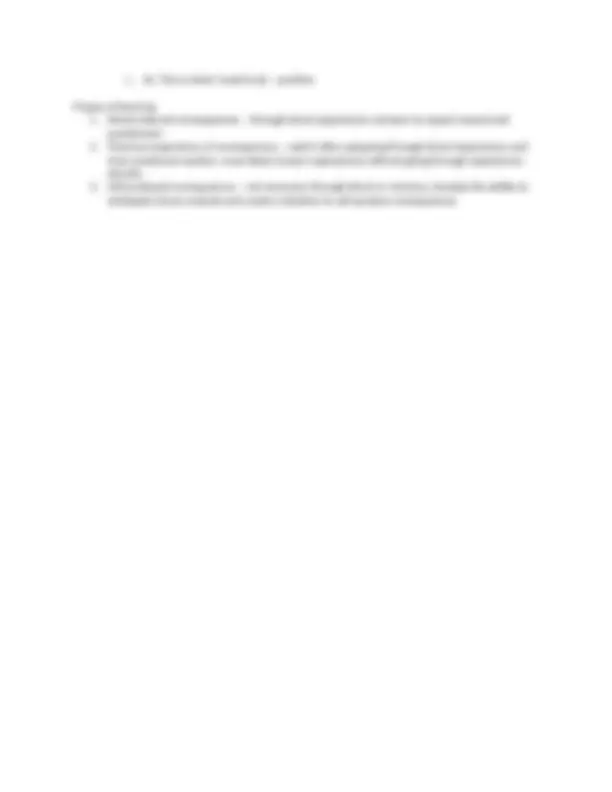
Basic Features for Learning Approaches
1. Relatively permanent change in behavior due to experience, all behavior is learned
2. Empirical research is cornerstone of theory, no use in intuition
3. Personality is based on principles of learning
4. Relies on situation specificity, behavior is responsive to reinforcements in the environment,
theory does not account for cognition, all environmental stimuli
5. Rejection of the medical model
6. Emphasis is on behavior change through behavior modification and behavior therapy
Four Ways Consequences of Behavior Affect Repeating Behavior
1. Positive Reinforcement – increase in frequency of behavior through things such as rewards
2. Negative Reinforcement – increase frequency of behavior by removing an aversive stimulus, ex.
Hunger pains > feed yourself to remove hunger pains, smoking > stop smoking to remove
anxiety about smoking
3. Punishment – end of a positive stimulus or a response that is followed by an aversive (bad)
stimulus to decrease likelihood of behavior
4. Extinction – remove reinforcers that maintain behavior, learned helplessness
Schedules of Reinforcement
1. Continuous
2. Intermittent – maintains for longer period, less frequent
3. Fixed Ratio Schedule (ex. 3 to 1) ex. Hamster food lever
4. Variable Ratio Schedule ex. Slot machines
5. Fixed Interval Schedule – positive reinforcement after a certain time (time interval)
6. Variable Interval Schedule – if change times everytime
a. Interval more efficient don’t know when it’s coming
Behaviorists view of psychopathology
1. Behavioral pathology is not a disease
a. Instead it’s looked at as the person does not know how to respond appropriately to a
stimuli
b. Fails to learn response or learns maladaptively
c. Behavior defecit
2. Maladaptive Response – a learned response that’s not acceptable by society or by others in the
person’s environment
a. Develop faulty behavior repertoires
Behavioral assessment – behaviors emphasized, tied to specific behavioral characteristics
Functional analysis – effort to ID environmental conditions that control behavior, look at behavior as a
function of specific events in the environment ex. Son melts down after 2 hrs of play
1. Identify specific behavior (target behavior)
2. Identify specific environmental factors that illicit, cue, or reinforce target behaviors
3. Identify environmental factors that can be manipulated to alter behavior
A – Assess the Antecedent (before to cause behavior) conditions of behavior
B – Assess Behavior itself
C – Assess Consequences of behavior










